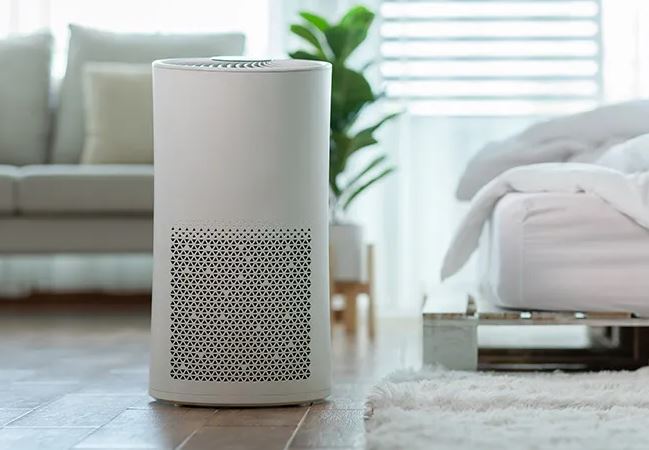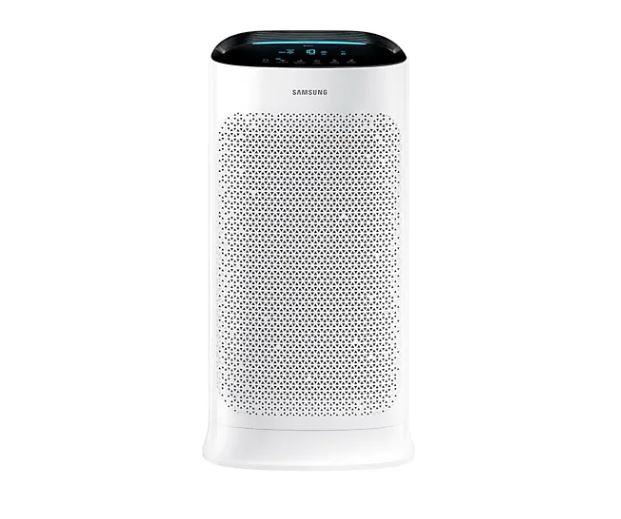Tech Meets Wellness: Smart Air Purifiers for the Modern Home
Tech Meets Wellness: Smart Air Purifiers for the Modern Home
Blog Article
In today's health-focused society, the quality of the air we breathe has taken center stage for homeowners and health-conscious individuals. With increasing environmental pollution and a better understanding of the effects of indoor pollutants on our health, it's no surprise that the air purifier market is booming.
Air purifiers are machines that remove contaminants from the air in a given area, promoting healthier indoor air. They are ideal for people with allergies, asthma, or other respiratory issues as they can significantly lower the levels of allergens, pollutants, and irritants in the air. Healthy individuals, too can rely on the added protection of air purifiers, as they provide reassurance and safeguard against airborne diseases.
This guide will delve into the world of air purifiers, exploring their benefits, the different types available, key considerations when making a purchasing decision, and maximizing your air purifier's potential. By the end, you should have a solid comprehension of air purifiers and be able to choose wisely about whether investing in one is the right choice for you and your family.

Decoding Air Pollutants and Their Influence on Health
To grasp the importance of air purification, it's key to comprehending the types of pollutants they target and the likely impact of contact with these pollutants.
Indoor air pollutants can be broadly grouped into three primary types:
- Particulate Contaminants: This includes tiny solid and liquid particles floating in the atmosphere. Examples include dust, smoke, pollen, pet dander, mold spores, and more. Particulate matter can cause respiratory issues and trigger allergic reactions.
- Understanding Volatile Organic Compounds: VOCs are gases released by solids and liquids. Sources of VOCs include aerosol sprays, cleaning products, paints, and pesticides, among others. Exposure to VOCs can lead to irritation of the eyes, nose, and throat, as well as headaches and nausea.
- Biological Contaminants: These include bacteria, viruses, mold, and mildew. They can cause a spectrum of health concerns, from minor allergies to serious infections.
The consequences of exposure on human health can differ considerably. For individuals with respiratory conditions or compromised immune systems, exposure to indoor air pollutants can lead to serious health issues. Even those in good health, chronic exposure to certain pollutants can increase the risk of respiratory conditions and other health concerns over time.

The Science Behind Air Purifiers
Air purifiers use a range of physical and chemical mechanisms to capture and remove pollutants from the air. Understanding the underlying principles employed by purifiers will help you understand their efficiency and the array of models on the market.
Here are the primary mechanisms and innovations used in air purifiers:
- Mechanical Filtration: This is the predominant technique used in air purifiers. It involves using filters to trap particles as air is drawn into the purifier. The filters can be made from various materials, each designed to trap particular particle types. For example:
- Pre-filters: The First Line of Defense: These are usually the first line of defense, trapping bigger contaminants like dust, hair, and similar larger particles.
- HEPA Filtration: Unparalleled Performance: HEPA filters are remarkably proficient at trapping ultrafine particles, including pollen, dust mites, and some bacteria and viruses. To be labeled a genuine HEPA filter, it must capture at least 99.97% of particles as small as 0.3 microns.
- carbon or charcoal filters: These filters are designed to effectively remove odors, VOCs, and gaseous compounds.
- The Power of Ionization: Ionizers use electricity to create an abundance of negative ions, which bind to particles in the air. The charged particles are drawn to nearby surfaces or the purifier itself.
- Ozone: A Powerful Purifier: Some air purifiers use ozone as a potent disinfectant to destroy contaminants. While effective, excessive ozone exposure carries risks so these types of purifiers should be used with care and only when no one is present.
- UV Light: A Radiant Solution: UV light can be used to neutralize bacteria, viruses, and mold spores. UV light is commonly paired with filtration to trap particles, and UV light provides an extra layer of protection against biological hazards.
Selecting the Perfect Purifier
With a variety of choices available, selecting the right air purifier can be a difficult decision. It's important to consider a range of criteria to ensure you make the right choice for your particular needs and room size.
Here are some essential factors to weigh:
- Room Size: Air purifiers are typically rated according to room size, so it's important to choose a model that can adequately cater to the room size. Most purifiers will list a maximum room size or a Clean Air Delivery Rate (CADR), which indicates the rate at which it can deliver clean air.
- Targeted Pollutants: Identify the types of pollutants you want to target. If you suffer from allergies, look for a purifier with a HEPA filtration system. For reducing unwanted smells, consider a model with a carbon-based filter. If you're concerned about pathogenic microorganisms, a purifier with UV light technology might be best.
- Whisper-quiet Performance: Air purifiers can produce varying levels of noise, so if you plan to use it in a quiet bedroom or tranquil space, look for models with a quiet mode for undisturbed rest.
- Maintenance and Costs: Consider the regular maintenance and associated costs of the purifier. HEPA filters, for example, typically need to be replaced every 6-12 months, depending on use and environmental factors. Include filter replacement costs in your calculations when making your choice.
- Enhancing Your Experience: Many purifiers offer smart features like automatic modes, air quality monitoring, and wireless control, allowing wireless control and real-time data. These features can enhance the convenience and effectiveness of your purifier.
Maximizing the Benefits of Your Air Purifier
Once you've made your selection and installed it, there are several things you can do to ensure it operates at optimal levels and delivers the greatest advantages:
- Strategic Positioning: Position your purifier in an open area, away from walls and furniture, to ensure optimal airflow. Avoid placing it near windows or doors as drafts can disrupt the purifier's effectiveness.
- Keep it Running: For the best results, it's recommended to run your purifier regularly. Many models have automatic or low-power settings that respond to air quality changes, so you can maintain healthy air quality while conserving energy.
- Regular Filter Care: Regularly adhere to the recommended filter replacement schedule. Over time, filters become saturated with particles, affecting efficiency. Schedule filter replacements so you don't forget.
- Reducing Indoor Contaminants: Alongside using an air purifier, take steps to reduce indoor pollutants. This could include frequent dusting and vacuuming, opting for natural cleaning solutions, and reducing chemical or aerosol usage. Report this page